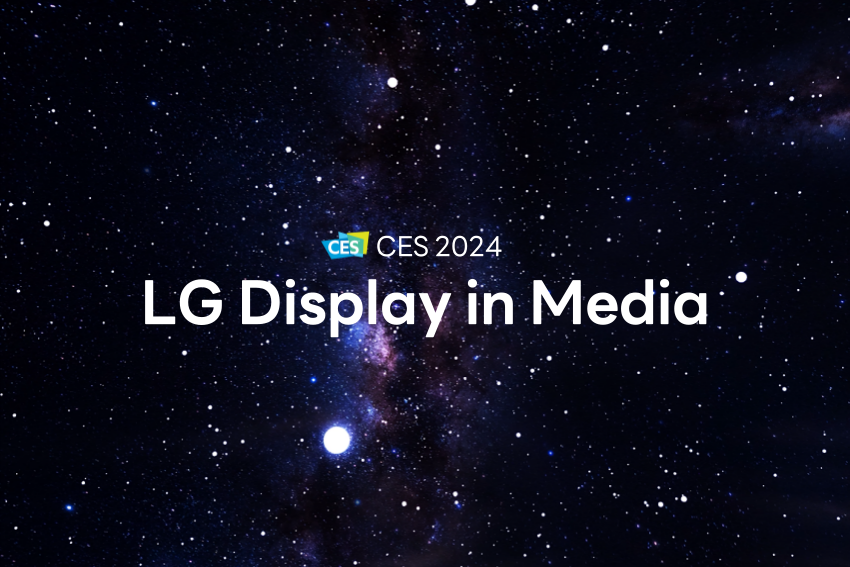By Alex Jensen

When you see lists of the best TVs on the market, OLED is generally recognized among the top TV panel technologies available today. This reputation has been built on OLED’s inherent self-emissive qualities that allow screens to pop with vibrant color accuracy, the deepest black possible, wide viewing angles, slim designs, and some pretty wild form factors – from rollable to transparent.
At the forefront of OLED innovation, LG Display has continued to evolve this technology, including with this year’s release of META Technology 2.0 that starred at CES 2024. Delivering 42% more brightness than conventional OLEDs and even wider viewing angles, META Technology 2.0 is underpinned by billions of micro lenses known as MLA+ along with performance-enhancing algorithms.
By offering brighter OLED brilliance, it’s easy to understand why META Technology 2.0 might excite TV viewers. Yet, I can’t help but think that we might be overlooking the fact that LG Display’s OLED monitors are now also coming equipped with META Technology 2.0. Let’s start with a look at why that matters.
Having your cake and eating it?

Put simply, there’s often a trade-off in the monitor world between high resolution and high refresh rates. META Technology 2.0 has helped to sidestep this battle between two important features by offering both.
Take LG Display’s 27-inch 480Hz QHD Gaming OLED panel. As the name suggests, it comes with QHD resolution as well as a 480Hz refresh rate. This should be great news for gamers who want both beautiful graphics and screen transitions that glide rather than skip. Imagine the speed of a bullet in a shooting game, for instance. That 480Hz refresh rate delivers 480 images every second, compared to half the number of images in the same amount of time with a 240Hz refresh rate.
While 480Hz is the fastest refresh rate among existing OLED panels, there are also other numbers to pay attention to, including response time. LG Display’s got it down to 0.02ms – yes that’s just 2/100,000ths of a second for an image to go from graphics card signal to on-screen reality.
Together, refresh rate and response time advantages are a magic combination. Yes, you might see higher refresh rates being advertised in the LCD monitor market, but the response time amplifies what OLED displays are capable of, as described here: “240Hz OLED panels are outperforming 360Hz LCD panels in terms of motion blur due to OLED’s faster response time. Additionally, you get much-improved contrast, color, true HDR pictures and more.” So, a 480Hz OLED monitor trumps even a 540Hz LCD screen.
Such differentiating factors could mean victory or defeat for gamers, among whom OLED panels have already been gaining popularity. When reporting that OLED monitor display shipments leapt 415% in 2023, with a futher 123% jump expected this year, market watcher Omdia’s analysis found that “OLED monitors are mostly used for gaming and have gained further traction following the inclusion of esports at the 2023 Asian Games.”
Something for everyone

That said, OLED monitors should not be considered the preserve of the competitive – or even casual – gamer. Omdia additionally pointed to “consumer demand for better monitor specifications” as well as “the trend torwards larger monitor sizes.”
While taking gaming seriously, LG Display is clearly also catering to those who want to use monitors for different purposes. For a start, the company’s current lineup of OLED monitor displays ranges from 27 all the way up to 45 inches. And that 45-inch option applies Bendable OLED technology, which enables the screen to bend up to 800R – a very appealing feature for those who value immersion.
Then there’s something called Dynamic Frequency & Resolution, applied by LG Display for the first time to its 31.5-inch Gaming OLED panel. This is another big plus for anyone seeking variety in a monitor because it allows users to freely switch between refresh rates of 480Hz and 240Hz, which respectively come with FHD or UHD resolution options. They could therefore have a single panel that maintains high display clarity but is still capable of an exceptionally high refresh rate when needed, meaning it “caters to gamers who also want to use their display for productivity and media streaming.”
Features that promote multi-purpose OLED monitor use are understandable considering how “the enhanced image quality and immersive viewing experience make OLED monitors a compelling choice for users seeking the best display performance.” That could include professional tasks like content creation given that META Technology’s micro lenses enhance the difference between brighter and darker areas on a screen, which “improves OLED’s suitability for photo and video editing.”
The blue light elephant in the room

Whether you’re gaming, video editing, or just relaxing with some content, it is also comforting to know that OLED panels are a lot easier on the eyes – and even the body.
Long viewing times can easily stretch into the night, and that’s when our bodies are supposed to be benefiting from a surge in melatonin in order to get ready for a restorative sleep. The problem is that blue light from screens has been shown to interfere with this process. However, OLED displays emit around half as much blue light as LCDs, allowing OLED panels to be recognized as “sleep friendly” because they have been shown to not cause the same melatonin drop as other screens.
Hence, LG Display’s OLED TV and monitor panels were certified as “Circadian Friendly” by TÜV Rheinland last year. This is in addition to other certifications and verifications demonstrating that they are “Eyesafe,” “Flicker Free,” and “Discomfort Glare Free.” In other words, when someone is choosing a monitor that they might want to use at night, an OLED panel may both protect against eye fatigue and support overall wellbeing.
So, don’t sleep on OLED monitors. But, do sleep well if you have one because they’re apparently good for that!









